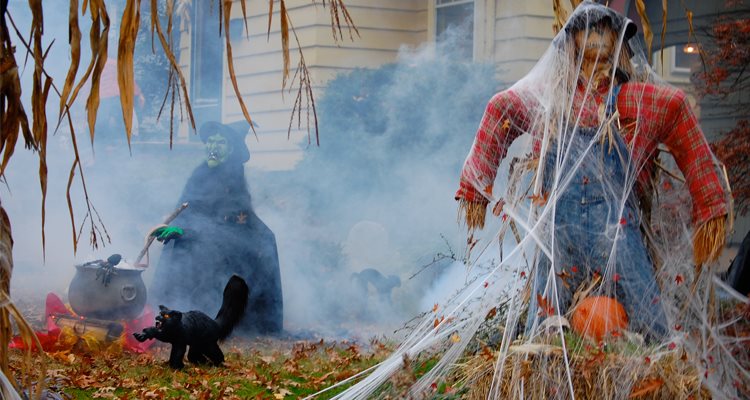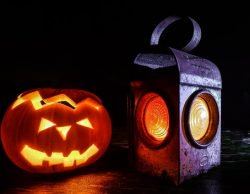For all the energy that goes into Halloween fun, it seems few of us know what we’re actually celebrating. Turns out, there’s a lot to learn about the night when it’s suddenly OK to walk the streets collecting candy from neighbors.
Here are some facts about Halloween history to pass along to your kids:
The Origin of Halloween
The holiday’s origin comes from an ancient Celtic festival known as Samhain (pronounced “sah-win”), which celebrated the end of the harvest season in Gaelic culture. During the time of Samhain, the ancient pagans took stock of supplies and prepared for winter.
The ancient Celts from Britain and Ireland observed the start of the new year on November 1, All Souls Day, marking the end of summer and harvest time. People came to believe that on October 31, the worlds of the living and dead overlapped before the start of the new year. October 31 became All Hallows Eve, when ghosts of the dead could return to destroy the harvest that was stored for winter. People set bonfires on hilltops to ward off the evil spirits before the start of the winter season. The word Halloween is a shortening of All Hallows’ Evening also known as Hallowe’en or All Hallows’ Eve.
Trick-or-Treating
Trick-or-treating may have also become a part of Halloween history thanks to Celtic tradition. Poor children in Britain and Ireland went door-to-door on All Hallows Eve and received food in exchange for the promise of praying for the giver’s dead relatives on All Saints Day. This practice was known as “going-a-souling.” While that may be the start of it, that tradition didn’t make its way to America. Here, trick-or-treating may have started with children trading songs for treats in the 1910s, according to old newspaper texts. The tradition didn’t really take off until after World War II, when many children’s magazines featured it and the idea entered popular culture.
Jack-o’-Lanterns
This tradition began with people believing that carving scary faces onto turnips would frighten away evil spirits. The tradition turned to pumpkins in America because pumpkins were more plentiful—and much easier to carve.
There are many legends surrounding the Jack-o’-Lantern (sometimes also spelled Jack O’Lantern) and where the name comes from. In Irish folklore, a lazy yet shrewd farmer named Jack uses a cross to trap the Devil. One story says that Jack tricked the Devil into climbing an apple tree, and once he was up there Jack quickly placed crosses around the trunk or carved a cross into the bark, so that the Devil couldn’t get down.
Despite the colorful legends, the term Jack-o’-Lantern originally meant a night watchman, or man with a lantern, with the earliest known use found in the mid-17th century.
Costumes
During the Samhain festival, some people wore masks and other disguises to avoid being recognized by evil spirits. The practice of dressing up in costumes and begging door-to-door for treats on holidays goes back to the Middle Ages, and includes Christmas wassailing. But the rise of costumes as a major part of Halloween actually took off in the United States as Halloween became a consumer holiday. Initial reports of mass-produced costumes date to as early as the 1930s. Wearing costumes really took off with the rise of trick-or-treating.
Haunted Houses, And All the Other Stuff
The idea of haunted houses was created simply as a way to make money. Playing off of the obvious themes of Halloween, the first haunted houses were fundraising efforts. The ideas of death and fearing spirits that surrounded All Hallows Eve gave rise to skeleton and ghost imagery. It also appears that the European interest in witches brought to America joined with the Native American belief in evil spirits. This association gave us witches and black cats—Celtic priests had convinced people that black cats were humans gone bad—a rise in popular culture as Halloween symbols. In addition, the festival of Samhain would frequently involve bonfires, which historians believe attracted insects and hungry bats to the area.
Image courtesy of Ted Bongiovanni used with permission.
This article originally published on Learning Liftoff October 15, 2014, it has been revised and republished October 2017.






































